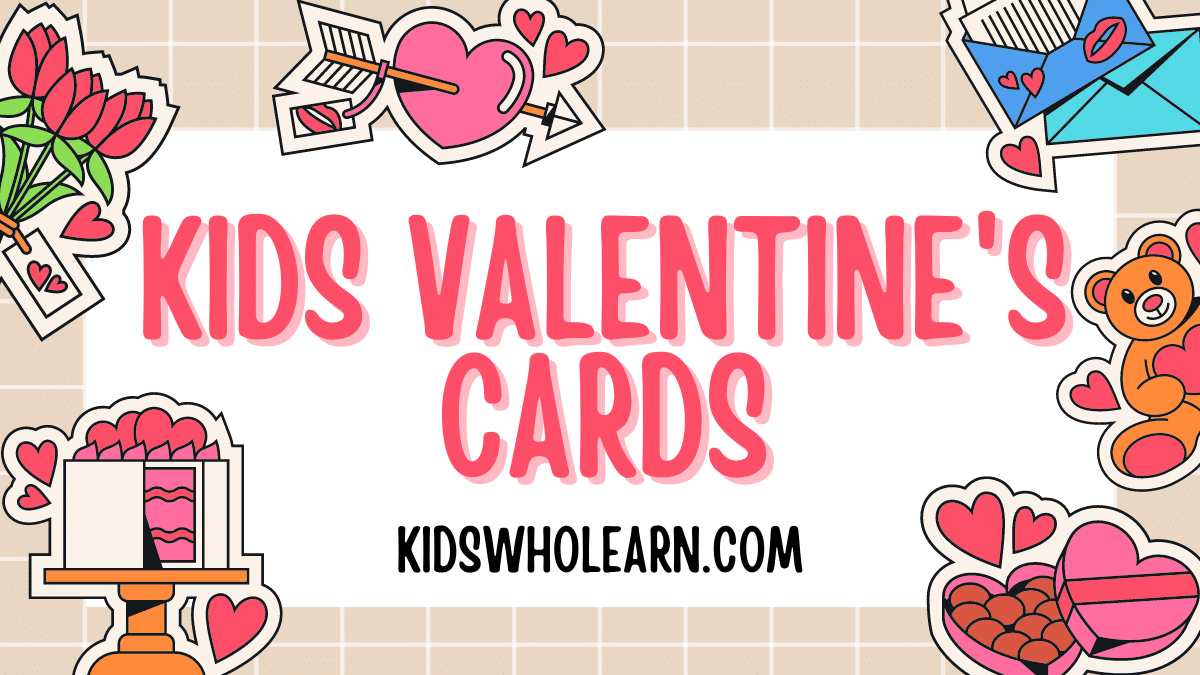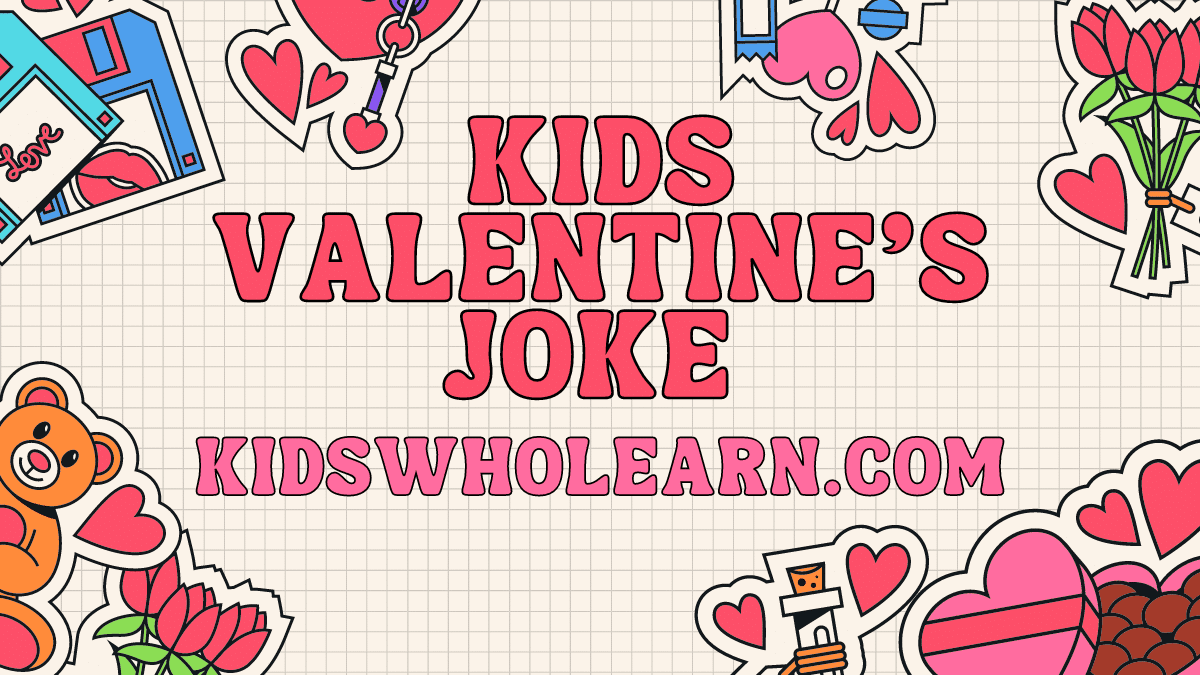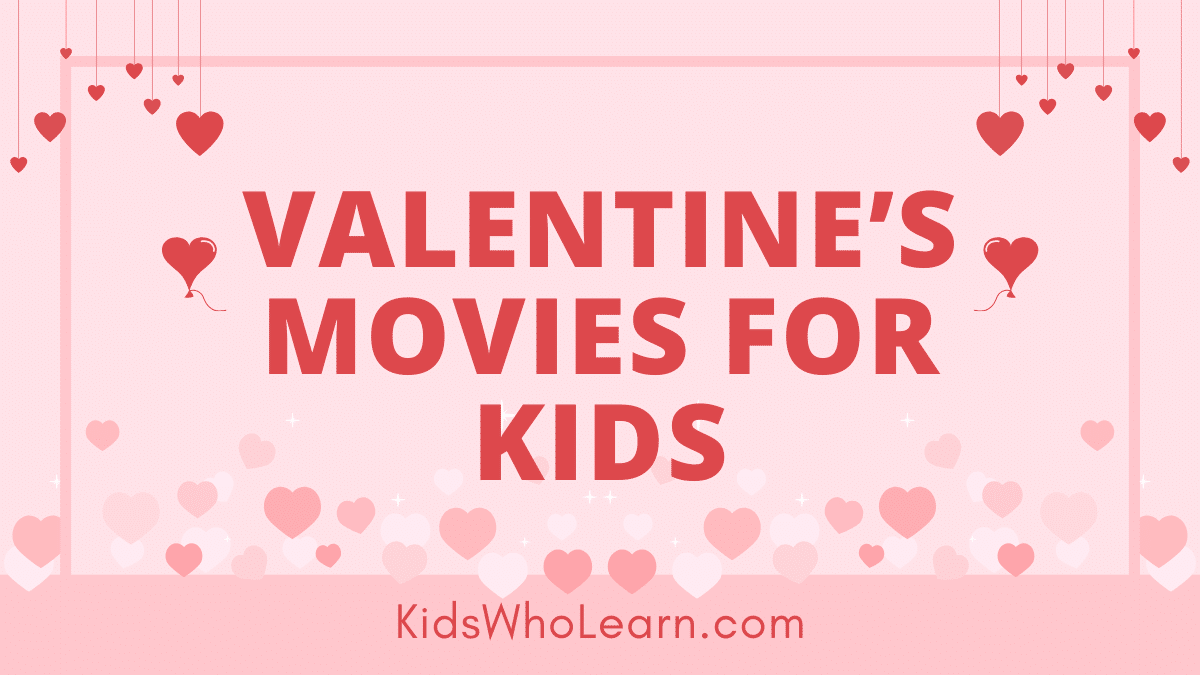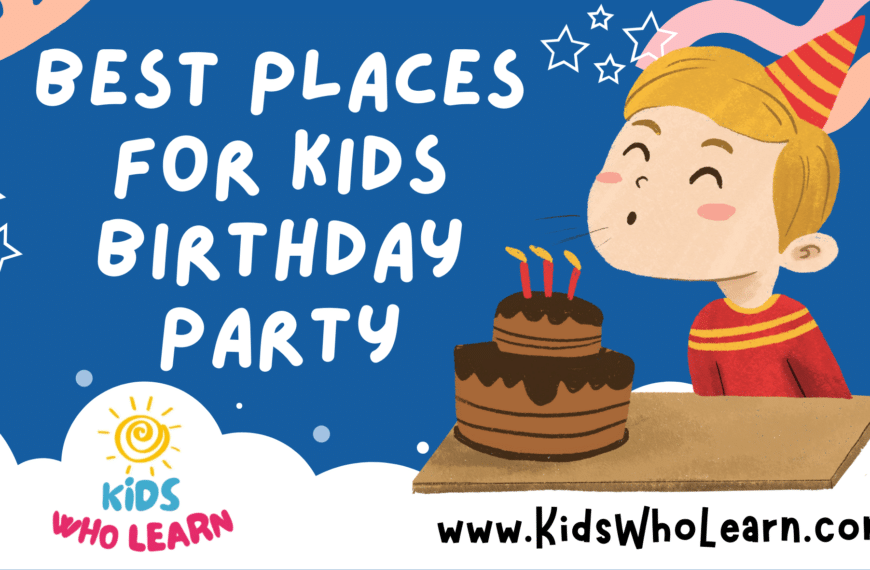Valentine’s Day provides a delightful opportunity for children to express their affections and friendships through the exchange of Valentine’s cards. As we explore the realm of Valentine’s cards for kids, it’s important to recognize the joy and creativity these small tokens of affection can inspire. Crafting and choosing Valentine’s cards offers a chance for children to showcase their individuality and thoughtfulness, while engaging in a tradition cherished by many.
The process of selecting or creating Valentine’s cards can also be a fun and educational experience for youngsters. It’s a time when they can learn about the value of caring for others, improve their arts and crafts skills, and even practice their writing. Moreover, the focus on personalization and expression can encourage kids to think about their relationships with their peers in a positive, meaningful way.
Key Takeaways
- Valentine’s cards for kids can foster creativity and self-expression.
- Selecting and crafting these cards is an educational experience that enhances social and artistic skills.
- Personalization of Valentine’s cards encourages thoughtful consideration of friendships.
Understanding Valentine’s Cards for Kids
When we think about Valentine’s Day, sweet sentiments and expressions of affection come to mind. For kids, Valentine’s cards are a playful and heartwarming way to engage in the holiday’s traditions. Here, we outline the essentials of choosing and understanding these cards for children.
Selection Criteria:
- Age Appropriateness: Make sure the content is suitable for the child’s age group, with easy-to-understand words and concepts.
- Design and Appeal: Bright colors and characters from popular media are usually very appealing to kids.
| Age Group | Themes | Features |
|---|---|---|
| Pre-K | Cartoon characters, animals | Stickers, temporary tattoos |
| 5-8 years | Superheroes, fantasy | Puzzles, interactive elements |
| 9-12 years | Music, sports | Collectible cards, trivia |
Messages: The messaging should be friendly and inclusive, focusing on friendship rather than romance. Encouraging words, puns, and simple jokes are common and enjoyed by kids.
Quantity and Distribution: It’s common for kids to exchange cards with all classmates to foster inclusiveness. We often witness schools providing lists to ensure each child receives a card.
Creation: Encouraging kids to create their own cards or personalize them adds a unique touch and can enhance their creativity. This activity also provides a hands-on experience for kids to express their feelings in a safe and fun environment.
By fully grasping these aspects, we can ensure Valentine’s cards for kids remain a joyous and positive exchange.
Design Ideas for Kids Valentine’s Cards
Valentine’s Day offers us a wonderful opportunity to create heartfelt messages. We focus on simplicity and personal touches to make each card special.
DIY Card Crafts
For DIY card crafts, our goal is to combine creativity with materials that are readily available at home. We can start with construction paper as the base, then add on elements like heart-shaped stickers, ribbons, and glitter.
- Materials: We use colorful paper, scissors, glue, and markers.
- Techniques: Folding paper into origami hearts or cutting out paper silhouettes of animals holding hearts.
Printable Card Options
Our printable card options cater to those who prefer ready-made designs or are short on time.
- Variety: Offer a range of themes from classic love motifs to popular cartoon characters.
- Ease: Just print, cut out, and perhaps add a small personal doodle or signature.
Themed Cards Inspiration
We find inspiration in themes that resonate with children, such as superheroes, animals, and space adventure.
- Superheroes: We design cards with sayings like “You’re my super friend!” featuring caped crusaders.
- Animals: Cards graced with cute animals and puns, e.g., “Whale you be mine?”
- Space: Imagery of planets and stars with playful words, “I love you to the moon and back.”
Selection Guide
When selecting Valentine’s cards for kids, we consider factors like age-appropriateness, the choice between commercial and non-commercial themes, and the inclusion of interactive elements to ensure the cards are engaging and suitable.
Age-Appropriate Designs
For Toddlers (Ages 1-3):
- Simple shapes
- Bright colors
- Minimal text
For Preschoolers (Ages 4-5):
- Basic words
- Familiar characters
- Sturdy materials
For School-Age Children (Ages 6-12):
- More text complexity
- Space for personal messages
- Variety of themes
Non-Commercial vs Commercial Cards
- Non-Commercial Cards:
- Unique and personal
- Focus on creativity and individual expression
- May include handmade options
- Commercial Cards:
- Feature popular characters and brands
- Instantly recognizable
- Often come in packs with similar designs
Interactive Elements
- Textured Surfaces or Materials:
- Adds a tactile dimension
- Examples: glitter, felt, or ribbons
- Moving Parts:
- Pieces that slide, spin, or pop up
- Encourages physical engagement with the card
Educational Aspects of Valentine’s Cards
Valentine’s cards offer unique educational opportunities for children. Through these cards, they can explore emotions, practice writing, and develop artistic skills.
Learning Emotions and Expressions
Valentine’s Day cards serve as a practical tool for children to identify and express their feelings. We teach kids how to label their emotions accurately by using words like happy, appreciative, or thankful. Mingling with peers allows them to understand and respond to others’ emotions, fostering empathy and social awareness.
- Identifying Emotions: Utilizing a range of emotive words.
- Expressing Emotions: Encouraging children to articulate their feelings.
Creative Writing Prompts
Using Valentine’s cards as writing prompts, kids enhance their writing capabilities. We utilize this exercise to introduce new vocabulary and encourage the formation of complete sentences.
- Vocabulary Building: Children encounter and use new and varied words.
- Sentence Construction: Kids practice making coherent and thoughtful sentences.
Art Skills Development
Crafting Valentine’s cards is a perfect chance for children to grow their artistic abilities. We expose them to various art materials and techniques, building fine motor skills and encouraging creative expression.
- Art Techniques: Experimenting with coloring, cutting, and pasting.
- Fine Motor Skills: Honing skills like drawing shapes and writing names.
Personalization Techniques
When creating Valentine’s cards for kids, we focus on three main personalization methods that ensure each card feels unique and special: crafting custom messages, incorporating personal photos, and using various stickers and embellishments.
Custom Messages
Our approach to custom messages involves a two-fold strategy: content and presentation. We select our words to convey affection and friendship, ensuring messages are age-appropriate and inclusive. For presentation, we often use:
- Fonts: Choosing playful and legible fonts.
- Colors: Using vibrant inks that stand out.
Photo Incorporation
Photos add a special touch, transforming a simple card into a cherished keepsake. Our techniques include:
- Quality: Ensuring high-resolution images for clarity.
- Integration: Seamlessly blending photos with design elements.
Stickers and Embellishments
Stickers and embellishments provide tactile and visual appeal. Our process includes:
- Selection: We choose theme-appropriate stickers that resonate with kids.
- Placement: Strategic positioning to enhance the card’s aesthetics without overcrowding.
Materials and Tools Required
When creating kids Valentine’s cards, it’s essential to choose the right materials and tools for quality crafting. Here’s what we’ll need to get started.
Paper Types and Sizes
- Standard Cardstock: A sturdy choice for card bases; comes in 8.5″x11″ or 12″x12″ sheets.
- Patterned Paper: Adds decorative element without the need for painting or drawing; available in multiple sizes.
- Construction Paper: A lightweight option, perfect for layering; typically sized at 9″x12″.
Coloring Materials
- Markers: Broad and fine tips for different line weights.
- Crayons: A kid-friendly medium that’s washable and safe.
- Colored Pencils: These provide better control for detailed work.
Cutting and Shaping Tools
- Scissors: Child-safe scissors are crucial for safety.
- Paper Trimmers: Provides straight, clean cuts for a professional look.
- Punches: Shapes, borders, and corner punches to add creative touches.
Safety Precautions
When choosing Valentine’s Day cards and crafts for kids, safety is our top priority. We ensure all materials are non-toxic, tools are age-appropriate, and supervision guidelines are clear.
Non-toxic Materials
- Crayons and Markers: Confirm that they are labeled as non-toxic and ASTM D-4236 compliant, indicating they’ve been evaluated for safety.
- Glues and Adhesives: Use only adhesives that are non-toxic and washable, suitable for use by children.
Age-Appropriate Tools
- Scissors: Provide children with blunt-tip scissors that are designed for their specific age group.
- Stamps and Punches: Ensure they have no small parts that could be choking hazards for younger children.
Supervision Guidelines
- Crafting Area: Always supervise the crafting area and keep it free from hazards, such as sharp objects and electrical outlets.
- Emergency Procedures: Have a clear plan in place for addressing any accidents or emergencies during crafting activities.
Distribution Ideas
We can maximize the joy of giving and receiving Valentine’s cards among kids with a few organized methods. From classroom exchanges to innovative virtual options, there are many ways to ensure every child gets a smile on Valentine’s Day.
Classroom Exchange Methods
We encourage setting up a Valentine’s mailbox for each child where classmates can drop cards. A simple and effective approach is to:
- Have each child decorate a shoebox
- Assign a day for card distribution
- Ensure every child receives a card to avoid anyone feeling left out
Alternatively, we can organize a Valentine’s Day party where card exchanges can happen in a festive environment. Activities could include:
- A card distribution game like “musical chairs” with Valentine’s cards
- An art station where children can create last-minute cards
Mail Delivery Tips
For a personal touch, mailing Valentine’s cards can be especially exciting for kids. Here’s how to ensure a seamless experience:
- Address Accuracy: Double-check addresses to avoid misdelivery.
- Decorative Stamps: Use fun, Valentine’s Day-themed stamps if available.
- Timely Posting: Mail cards at least a week in advance to account for any postal delays.
Virtual Valentine’s Cards
With digital tools, we can send virtual Valentine’s cards that are both creative and eco-friendly. We suggest:
- Custom e-card platforms: Utilize services like Smilebox or Canva for designing personalized e-cards.
- Video messages: Encourage kids to record short video valentines to send to friends via email or platforms like Vimeo.
Sustainable Practices
In crafting kids’ Valentine’s cards, we prioritize sustainability to reduce environmental impact and cultivate eco-friendly practices. Our choices include the use of recycled materials, creation of reusable designs, and offering digital alternatives.
Recycled Materials
We opt for cards made from 100% post-consumer recycled paper, ensuring that no new trees are cut down for their production. Our inks are soy-based, providing a safer option for both the environment and the end-user.
Reusable Designs
Our cards feature detachable parts that can be repurposed as bookmarks or small posters. This not only extends the life of the card but also encourages kids to think creatively about reusing materials.
Digital Options
For a paperless alternative, we provide digital Valentine’s cards that can be personalized and sent electronically. These options save on paper and reduce the carbon footprint associated with physical card distribution.
Celebration and Activities
In this section, we’ll guide you through various activities that are perfect for kids to celebrate Valentine’s Day, ranging from school parties to creative card-making workshops and inclusive community events.
Valentine’s Day Parties
To start, we organize Valentine’s Day parties in schools or at home, focusing on themes that are both fun and inclusive. For these parties, we prepare activities such as:
- Game Stations: We set up various stations with Valentine-themed games that encourage interaction and teamwork.
- Pin the Heart on the Cupid
- Musical Hearts
- Food Tables: We lay out snacks and treats that are both delicious and visually appealing, often adorned with hearts and red or pink frosting.
Card-Making Workshops
We hold workshops where children can express their creativity through making Valentine’s cards. In these workshops:
- We provide a wide array of materials, like colored paper, glitter, stickers, and markers.
- Kids learn various card-making techniques, giving them a chance to create something uniquely theirs to give to friends and family.
Community Events
Finally, we reach out to local community centers to host events where kids can engage in Valentine’s Day activities in a broader social setting. Our community events might include:
- Public Card Exchange Centers: A fun and anonymous way for children to exchange cards with their peers.
- Performances: Local entertainers or children themselves put on shows that embrace the spirit of love and friendship inherent to the holiday.
Frequently Asked Questions
When it comes to creating Valentine’s Day cards for kids, we’re often asked how to make them unique and memorable. Here, we address common queries to help you craft the perfect sentiment for this loving occasion.
How can I personalize Valentine’s Day cards for my child’s classmates?
We recommend using stickers, stamps, or having your child draw on each card to add a personal touch. Including a favorite joke or a fun fact can also make each card feel special and tailored to your child’s friendships.
What are some thoughtful messages to include in a Valentine’s card for a child?
In children’s Valentine’s cards, messages like “You’re a great friend!” or “Thanks for being awesome!” celebrate friendship and positivity. For a personal touch, a message relating to a shared interest or inside joke makes the card special.
Are there creative alternatives to traditional Valentine’s Day cards for children?
Consider making DIY crafts, such as friendship bracelets, or using recycled materials to create unique cards. You can also include interactive elements like puzzles or small games that classmates can enjoy.
What should parents consider when selecting Valentine’s Day cards for school exchanges?
We advise choosing cards that are inclusive and considerate of all classmates. Also, be aware of school policies regarding candy or toys, and ensure the cards are age-appropriate and respectful of various sensitivities.
How can I incorporate my child’s photo into their Valentine’s Day cards effectively?
To integrate your child’s photo creatively, consider using it as a card’s background, or incorporate it into a design element like a superhero or an animal. Make sure the photo is clear and the card’s message complements the image.
What are some unique Valentine’s Day gift ideas for children?
Beyond cards, small books, puzzles, and craft kits make for unique gifts that provide an experience beyond the holiday. Alternatively, consider arranging a Valentine-themed playdate or craft activity which can be a memorable gift of shared time and fun.

















